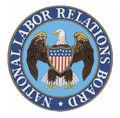Reaffirming its controversial D.R. Horton decision, the National Labor Relations Board (NLRB or Board) recently ruled that an employer who required its employees to agree to resolve all employment-related claims through individual arbitration, waiving their right to pursue class actions, violated the National Labor Relations Act (NLRA). Though two members of the Board dissented, the three member majority pointed to the core objective of the NLRA, namely the protection of workers acting in concert, to find that mandatory arbitration agreements waiving an employee’s right to file a class or collective action is unlawful. Murphy Oil USA, Inc., 361 NLRB No. 72 (Oct. 28, 2014).
Employees Filed FLSA Collective Action
Four employees of Murphy Oil USA, Inc., which operates over 1,000 retail fueling stations across 21 states, filed a lawsuit in federal court in Alabama alleging that the company violated the Fair Labor Standards Act (FLSA) by failing to pay overtime and requiring employees to perform work-related activities off-the-clock. They brought the case as a collective action under the FLSA which allows them to sue on behalf of themselves and all other similarly situated Murphy Oil employees. The company asked the court to dismiss the collective action, seeking to enforce arbitration agreements signed by the employees that require that all claims be arbitrated on an individual basis. One of the plaintiff-employees then filed an unfair labor charge with the NLRB alleging that the company was violating Section 8(a)(1) of the NLRA by using and enforcing mandatory arbitration agreements that prohibited employees from engaging in protected, concerted activities.
Board Asserts D.R. Horton Was Correctly Decided
In deciding this NLRA violation issue, the Board believes the rationale articulated in its 2012 D.R. Horton case is correct, asserting that “[m]andatory arbitration agreements that bar employees from bringing joint, class, or collective workplace claims in any forum restrict the exercise of the substantive right to act concertedly for mutual aid or protection that is central to the National Labor Relations Act.” The Board states that the basic premise of federal labor law – protecting the right of workers to engage in collective action – makes the NLRA different from other labor and employment statutes. The Board points to earlier Supreme Court decisions that made clear that the NLRA protects employees “when they seek to improve working conditions through resort to administrative and judicial forums . . .” Other court decisions cited by the Board held that individual agreements between employees and an employer (as opposed to collective bargaining agreements) cannot restrict employees’ Section 7 rights. Relying on these cases and the majority’s interpretation of the core objective of federal labor law, the Board adheres to its position that protecting workers’ right to pursue collective actions to improve working conditions is a substantive right under the NLRA that cannot be waived by employees through a mandatory arbitration agreement.
Fifth Circuit Got D.R. Horton Decision Wrong, According to the Majority Opinion of Board
In December 2013, a divided Fifth Circuit Court of Appeals held that the NLRA did not override the Federal Arbitration Act (FAA), thereby allowing an employer’s arbitration agreement to be enforced according to its terms, including the agreement’s waiver of class claims. D.R. Horton, Inc. v. NLRB, ___ F.3d ___, 2013 WL 6231617 (5th Cir. Dec. 3, 2013). Rather than settling the issue for the NLRB and employers nationwide, the Fifth Circuit’s decision did little to quell the NLRB’s belief that class action waivers violate the NLRA. In the Murphy Oil case, the Board attempts to explain why it believes the Fifth Circuit got it wrong.
First, the Board asserts that the Fifth Circuit simply followed other FAA cases that did not involve a substantive right under Section 7 of the NLRA. The Board argues that both the NLRA and the FAA must be accommodated and the Fifth Circuit’s decision gave too little weight to the NLRA and its underlying labor policy. Second, the Board states that the Fifth Circuit’s decision forces workers into more costly and disruptive forms of concerted activity than bringing a collective action in court. The Board believes that there is no basis for carving out concerted legal activity as entitled to less protection than other concerted activities, such as picketing, strikes and boycotts. Third, the Board notes that the Supreme Court, while favoring arbitration, prohibits a prospective waiver of a party’s right to pursue statutory remedies and an arbitration agreement that precludes employees from filing joint, class or collective claims regarding working conditions in any forum amounts to a prospective waiver of a right guaranteed by the NLRA.
Analysis By Other Circuits Rejected by Board
The Board pays little attention to and dismisses decisions by three other circuit courts of appeal that rejected the Board’s D.R. Horton rationale. In essence, the Board states that the Second and Eighth Circuits purportedly did not conduct a thorough analysis of the legal issues and the Ninth Circuit amended its decision to refrain from deciding the issue. Consequently, the Board found those decisions to be unpersuasive.
Two Board Members Dissent
Two of the five board members dissented, rejecting the majority’s D.R. Horton rationale. Member Miscimarra stated that the NLRA “cannot reasonably be interpreted as giving employees a broad-based right to “class” treatment under other Federal, State, and local laws.” Member Johnson stated that the Board’s “interpretation of the FAA – which otherwise requires an agreement to be enforced exactly according to its terms – would allow Section 7 to swallow up the FAA itself.” The dissenters also noted that the majority essentially ignored numerous clear decisions of the Supreme Court. In citing the Supreme Court’s 2011 AT&T Mobility, LLC v. Concepcion case, member Johnson stated “Notably, the Court forbade [the majority’s] interpretation [of the FAA] when it decided that the FAA’s savings clause could not be construed to include a right that would be “absolutely inconsistent” with the FAA’s provisions.” He went on to write:
The governing law could not be plainer. Provisions in arbitration agreements precluding class actions may not be condemned simply because they restrict an employee’s ability to use litigation procedures established under other statutes in litigating those employment-related claims. This is especially so where the governing statutes clearly describe the litigation procedures as procedural rights.
The dissenting members believe that employees and employers may enter into agreements that waive class procedures in litigation or arbitration.
What’s Next For Arbitration Agreements That Waive Class Actions?
The current majority of the Board appears unpersuaded by federal court decisions—not to mention the Supreme Court of the United States–holding that its position in D.R. Horton is simply wrong. It appears that, absent a further Supreme Court decision on the issue, the NLRB General Counsel likely will continue to issue complaints against employers who require employees to sign arbitration agreements that include a waiver of joint, class and collective actions. If and when the makeup of the Board changes, the dissenting opinion may become the majority opinion for future cases. In the meantime, employers who mandate such agreements should continue to enforce them. In other words, if faced with a class or collective action by an employee or employees who signed an agreement waiving class claims, the employer should ask the court to compel individual arbitration, dismissing the class/collective action. Despite the Board’s current position, a court is likely to grant that request. Employers should review their arbitration agreements, however, to ensure that any disputes arising under the NLRA are not subject to the mandatory arbitration provision and that employees are not prohibited from participating in proceedings before the Board.






